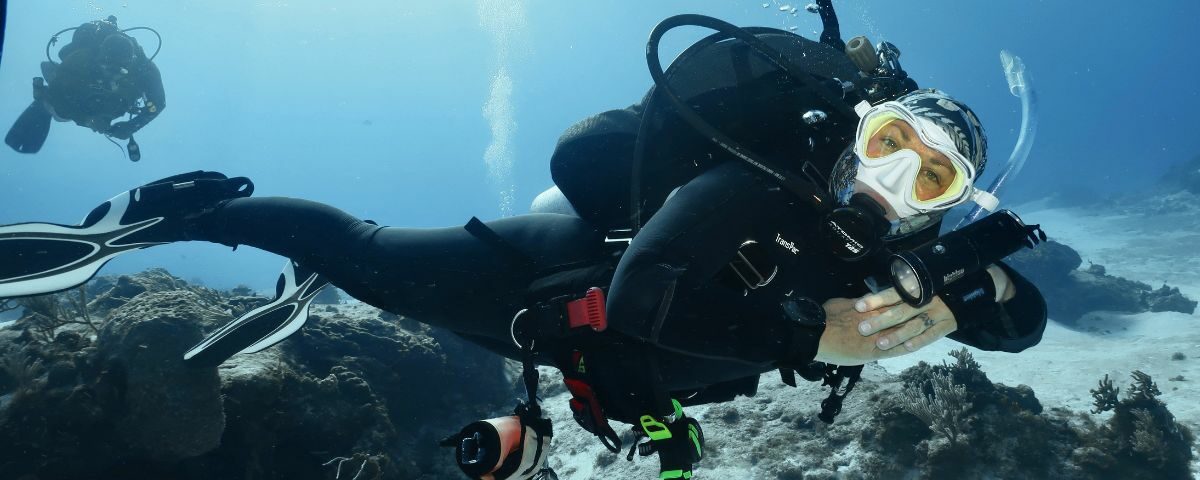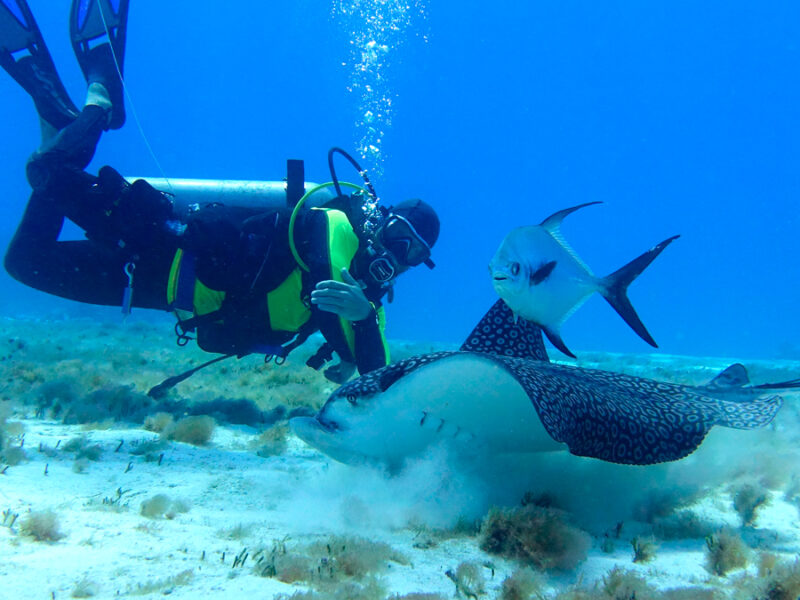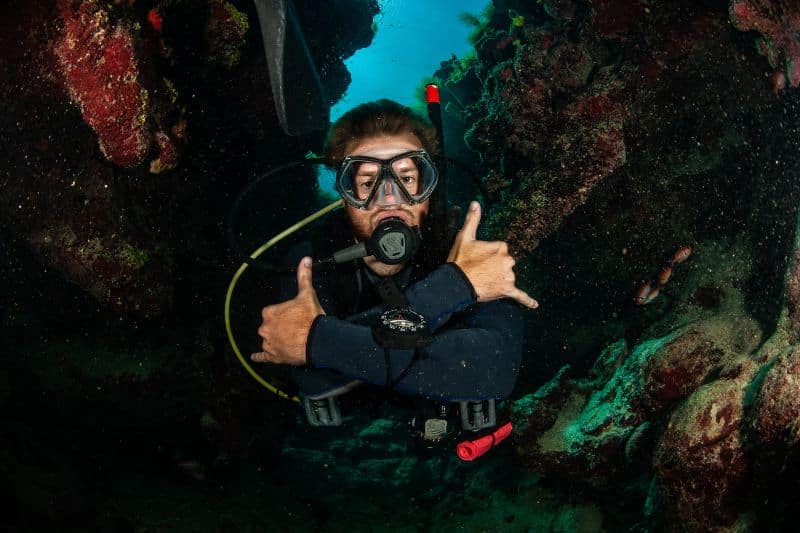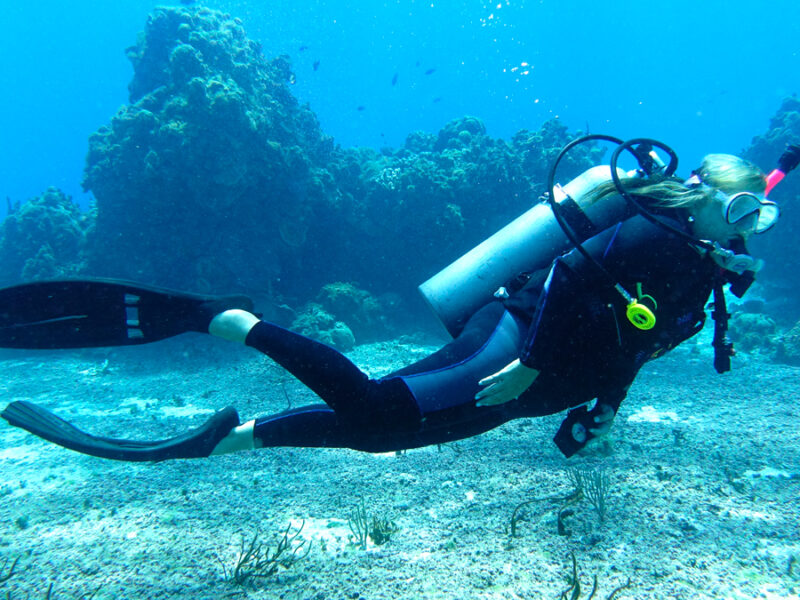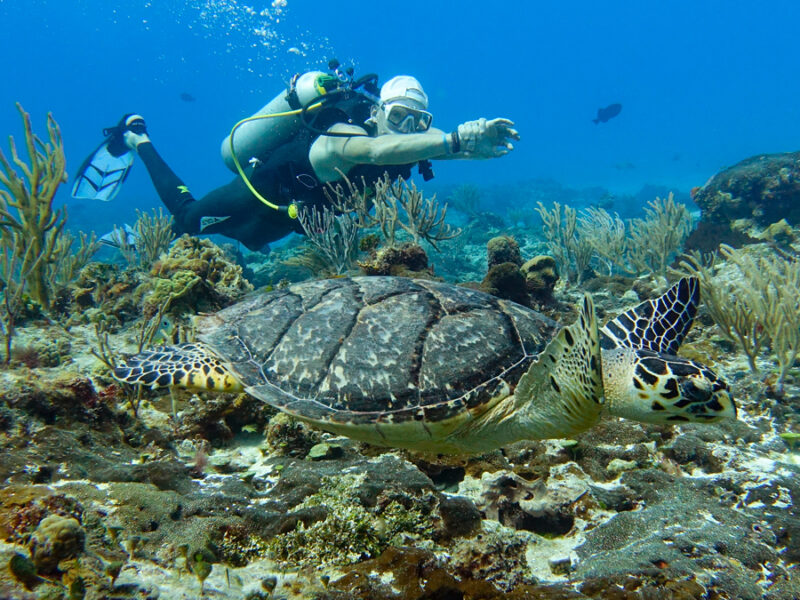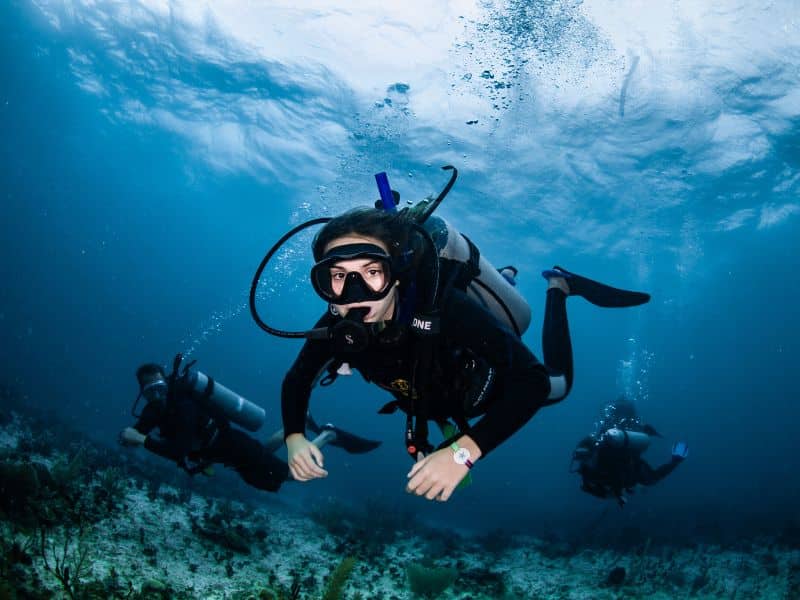4. Drift Diving Tips
4.1. For Drift Diving, Follow Your Dive Guide’s Instructions
Drift diving requires knowledge and experience, and dive guides are experts in these waters. They understand the peculiarities of the currents, influenced by tides and wind, ensuring your drift dive is both safe and enjoyable.
Even if tidal maps are accessible online, their information doesn’t always reveal the intensity of the current at depth. Observing marine life during your dive can offer clues: if fish or soft corals move in a different direction, it may signal a shift in the current. Local divers are invaluable sources of information, so don’t hesitate to ask them for advice before your drift dive.
Downward currents can also be a rare but not impossible concern during a drift dive, making it essential to follow your guide’s instructions closely. Cozumel drift diving is particularly famous for its breathtaking underwater currents, and practicing it with a professional guide from Dressel Divers helps a smooth and thrilling experience.
4.2. The Better Your Buoyancy, the Better Your Drift Dive
Mastering buoyancy control is a game-changer for drift divers. A horizontal position about one meter above the seabed minimizes resistance and helps you flow with the current. Floating upright or moving too far from the reef increases drag, making your drift dive less efficient.
Proper weighting is also essential for smooth drift dives. If you’re unsure about buoyancy techniques, explore our guide: “3 Secrets of Buoyancy Control to Dive Like an Expert Diver,” written by our HR Director and technical diving specialist, Víctor Córdoba.
4.3. Go With the Drift
Swimming against the current during drift dives is both exhausting and futile. Instead, embrace the flow. Use the reef’s formations to shelter from strong currents when needed, and always stay near your dive buddy.
If separated from the group, deploy your SMB (Surface Marker Buoy) to signal the boat for pickup. The golden rule in drift diving is to surface and regroup rather than waste time searching for others. Cozumel drift diving offers some of the best underwater currents, making it a top destination for both beginners and experienced drift divers.
4.4. Drift Dive, Keeping an Eye Out
Soft corals and gorgonians are excellent natural indicators of current direction and strength, helping you adapt to the drifting water. While navigating, watch for obstacles like reef pinnacles and rocky formations, anticipating movements to avoid collisions.
For underwater photographers, drift diving presents unique challenges and opportunities. Keep your camera ready, as you often have just one chance to capture that perfect shot of marine life in motion.
4.5. Common Mistakes and How to Avoid Them
When it comes to drift diving, there are a few common mistakes that divers may make, especially when trying this exciting activity for the first time. Understanding these mistakes and knowing how to avoid them can make your experience safer and more enjoyable.
Underestimating the Current
One of the most common mistakes when drift diving is underestimating the strength of the current. Divers may think they can swim against it or misjudge how quickly it will carry them.
How to avoid it: Always check current conditions before your dive. Experienced guides can help assess the water drift, and it’s essential to understand the potential risks of strong currents. Always follow the dive plan and stay aware of your surroundings.
Lack of Experience in Handling Strong Currents
Some divers may struggle to manage strong drift dives or may panic when being carried by the current.
How to avoid it: Practice staying calm and controlling your buoyancy. If you’re new to drift diving, take a specialty course that focuses on drift dives, so you can develop the skills needed to handle strong currents effectively.
Not Conserving Air or Energy
During a drift dive, you may be carried by the current, and the excitement can lead to faster air consumption or unnecessary energy expenditure.
How to avoid it: Keep a steady pace and control your breathing. Conserve energy by letting the current carry you rather than fighting it. Always monitor your air supply and communicate with your buddy.




